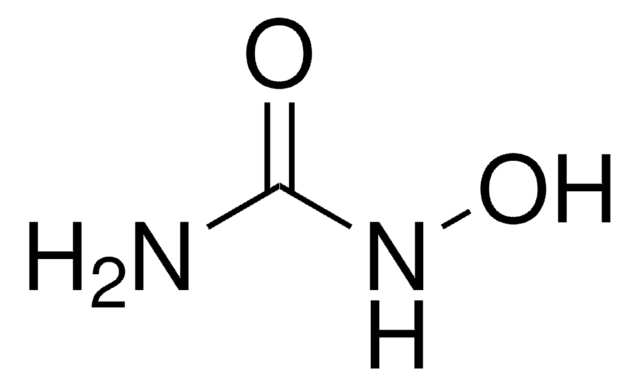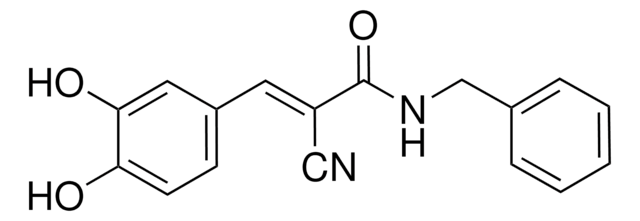5.32372
THZ1
≥96% (HPLC), solid, Cdk7 inhibitor, Calbiochem®
Synonym(e):
Cdk7 Inhibitor VIII, THZ1, ( E)-N-(3-(5-Chloro-4-(1H-indol-3-yl)pyrimidin-2-ylamino)phenyl)-4-(4-(dimethylamino)but-2-enamido)benzamide, 4HCl, THZ1, HCl
About This Item
Empfohlene Produkte
Produktbezeichnung
Cdk7 Inhibitor VIII, THZ1,
Assay
≥96% (HPLC)
Qualitätsniveau
Form
solid
Hersteller/Markenname
Calbiochem®
Lagerbedingungen
OK to freeze
desiccated (hygroscopic)
protect from light
Farbe
yellow
Löslichkeit
DMSO: 50 mg/mL
Lagertemp.
−20°C
Allgemeine Beschreibung
Biochem./physiol. Wirkung
Leistungsmerkmale und Vorteile
- Cell-permeable
- Non-toxic
- ATP-site directed
- Irreversible inhibitor
Warnhinweis
Rekonstituierung
Sonstige Hinweise
Rechtliche Hinweise
Lagerklassenschlüssel
11 - Combustible Solids
WGK
WGK 3
Flammpunkt (°F)
Not applicable
Flammpunkt (°C)
Not applicable
Analysenzertifikate (COA)
Suchen Sie nach Analysenzertifikate (COA), indem Sie die Lot-/Chargennummer des Produkts eingeben. Lot- und Chargennummern sind auf dem Produktetikett hinter den Wörtern ‘Lot’ oder ‘Batch’ (Lot oder Charge) zu finden.
Besitzen Sie dieses Produkt bereits?
In der Dokumentenbibliothek finden Sie die Dokumentation zu den Produkten, die Sie kürzlich erworben haben.
Unser Team von Wissenschaftlern verfügt über Erfahrung in allen Forschungsbereichen einschließlich Life Science, Materialwissenschaften, chemischer Synthese, Chromatographie, Analytik und vielen mehr..
Setzen Sie sich mit dem technischen Dienst in Verbindung.







